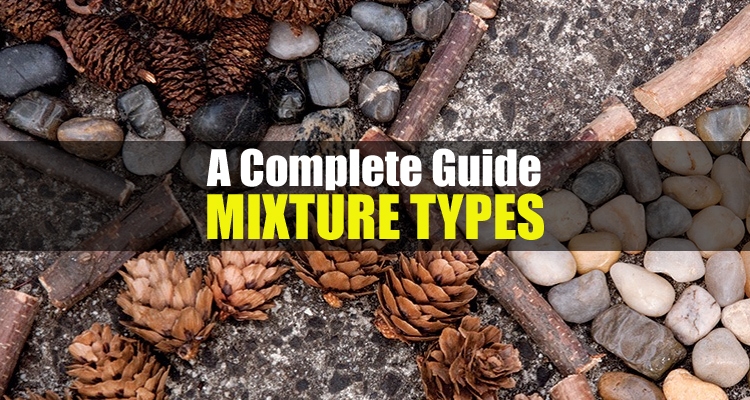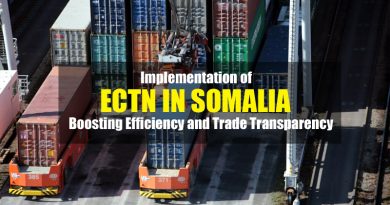A Complete Guide About Mixtures And Their Types
The vast majority of the chemicals we come into contact with daily are impure mixtures. Other substances can be found in trace amounts in these molecules. They’re made up of elements, compounds, or elements and compounds that haven’t gone through any chemical processes.
When sugar is dissolved in water, it is considered a mixture since both pure components are present. It was made without the need for any chemicals by simple mixing. Let us look at mixture and it’s types in depth.
Also Read: Rope Selection Guide: How to Select Best Rope in UAE
What is a Mixture?
“A mixture is a sort of matter created by combining two or more pure things (elements and compounds) in any proportion so that they do not undergo a chemical change and preserve their qualities.” As a result, they are impure materials.”
The vast majority of the compounds we are familiar with are mixtures. The ingredients that make up a mixture are known as components or constituents of mixtures. We utilise air, milk, tap water, honey, ice cream, and other typical mixtures in our daily lives.
Air, for example, is a combination of gases including oxygen, nitrogen, argon, carbon dioxide, and water vapour, among others. Chemically, the different gases in the atmosphere are not mixed.
Also Read: 7 Ways to Modernize Traditional Home in Dubai
Mixture Characteristics
- All mixtures (excluding solutions) are heterogeneous, meaning that their composition does not remain consistent throughout. As a result, air that contains dust particles and contaminants has a heterogeneous composition. It is because dust particles/pollutants change depending on where they are found.
- Magnets, decantation, filtering, distillation, sublimation, and other basic procedures can be used to separate the components of a mixture. A magnet, for example, can be used to separate a combination comprising iron powder and sulphur.
- When a magnet is inserted into the mixture, the iron powder particles are attracted and adhere to it. Iron is extracted from sulphur in this way.
- A mixture’s components can exist in any quantity, meaning that the mixture’s composition is not set. Sand and salt, for example, maybe blended in varying quantities to create a variety of combinations.
- A mixture’s qualities are the attributes of its ingredients. A blend of iron powder and sulphur, for example, has both iron and sulphur characteristics.
- During the development of a mixture, there is no heat exchange. Separation borders can be detected between the particles in a heterogeneous mixture. A homogenous mixture, on the other hand, has no such limits.
- A heterogeneous mixture’s qualities do not remain consistent throughout the bulk, whereas a homogeneous mixture’s properties do.
- Because it is made of variable components, a mixture does not have a set melting and boiling point.
Also Read: 8 Amazing Upcoming Mega Construction Projects In The UAE
Classification of Mixtures
We come across numerous sorts of mixtures in our daily lives. Some of them appear to be mixtures. For example, the two components in a mixture of salt and sugar, or sand and water, maybe clearly differentiated.
However, there are other combinations in which the ingredients are not visible. Consider a sugar solution as an example. We can’t discern sugar or water individually in this solution.
We’ve learned that mixtures are created when combined with two or more pure things, such as elements, compounds, or both. There are two different kinds of mixtures. There are two types of these: homogeneous and heterogeneous.
1. Homogeneous Mixtures
If the different ingredients or substances contained in a combination are consistently blended without any apparent separation limit, it is said to be homogenous.
A solution is a homogenous combination that has a consistent composition throughout. Here are a few instances of homogenous mixtures:
- When a salt, such as sodium chloride, or sugar, is dissolved in water, the outcome is a homogenous combination. The elements are so evenly blended that identifying them may be impossible. It implies that they are not separated in any way.
- Air is also a homogenous combination of numerous gases, including nitrogen, oxygen, carbon dioxide, water vapours, inert gases. All of the gases in the air are blended evenly. These gases in the atmosphere are untraceable.
The ingredients or components of a homogeneous mixture can be present in any proportion. If we produce three copper sulphate solutions in water with varied proportions of the crystalline solid, the blue solutions will not have the same intensity of blue.
The ingredients of a homogeneous mixture are uniformly blended and have no separating boundaries.
Without using a strong microscope, the constituent particles of a homogenous mixture cannot be recognised or observed.
2. Heterogeneous Mixtures
If a combination does not have a consistent composition and evident separation borders between the parts, it is heterogeneous.
A few instances of heterogeneous mixtures are shown below.
- Sand and common salt make into a heterogeneous combination. These are undeniably present in the same phase, the solid phase, but have unique separation limits. The sand and ordinary salt particles in the combination are visible.
- Oil and water combine to generate a heterogeneous combination in the same way. In this situation, both elements are liquids, yet their separation limits are distinct. Different layers of oil and water can be detected.
Also Read: Construction in Dubai Beams High With Foreign Investments and Growth
Conclusion
A mixture is a sort of matter made by combining two or more pure things (elements and compounds) in any proportion such that they don’t change chemically and keep their own qualities.
Homogeneous mixtures and heterogeneous mixtures are the two types of mixtures. We learned about mixtures and the distinctions between compounds and mixtures in this article.




